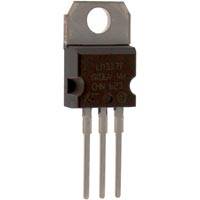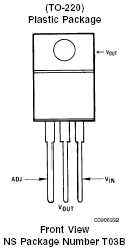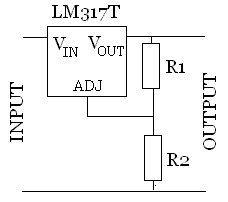What I want to know is to get the light to run on 8v can I say put a couple of resistors on the output of the dc-dc converter and tap off 8v from the 12v? I would then set up a relay to bypass the resistors to put the full 12v into the light for high beem. What do you think?
Muzza, It should be much simpler than that:
All you should need is a suitable resistor put in series with the light to reduce the current.
Measure the current at 8V and make a note of it.
go to
http://led.linear1.org/led.wiz and enter the details as shown in the attachment below, but use your measured current (in mA) instead of my guesstimated 400mA and see what the result is.
Although your light has three LEDs, I've treated it as a single 9Watt 750mA LED to save any confusion.
The resistor will probably need to be rated for at least 2 Watts.
You can use four 2 Watt resistors in a series parallel configuration to reduce the load on them if you want them to run cooler.
The four 10 Ohm resistors will still have the same resistance as a single 10 Ohm resistor, but the heat generated will be divided evenly into the four resistors.
To switch to high beam, you simply put a switch directly across the resistors to bypass them.
A relay will not be required with this low amount of current.
There are other ways to do it by using one of these:


a LM317T voltage regulator chip (and one or two resistors):

Voltage regulation circuit.If you use the voltage regulation method, you would use a variable resistor for R2 to adjust the intensity of the low beam, and then use a two way switch to switch between the regulated output and the unregulated input for low or high beam.

Current regulation circuit.This will need to use a 1Watt resistor (or four as mentioned above) to handle the current. Simply use a switch to bypass the current regulator circuit for high beam.
As the chip will be regulating around 5 Watts, it will need a
heat sink to stop it from overheating and cutting out.
The maximum continuous current which can be managed by the LM317T is 1.5 Amps, and that is with a decent heatsink fitted. The LM338T is rated at 5 Amps of continuous current with 50ms bursts of up to 7 Amps. However with a large heatsink it is possible to manage continuous currents of 8 Amps+.
The LM317T accepts an input voltage from 3 Volts to 40 Volts, and it will cope with an average current of 1.5 Amps. The higher the voltage and the higher the current, the hotter will get the LM317T - therefore a suitable TO-220 heatsink can become essential or the chip will automatically shut down and/or be damaged.
Now you have several options to consider.
 Alan
Alan